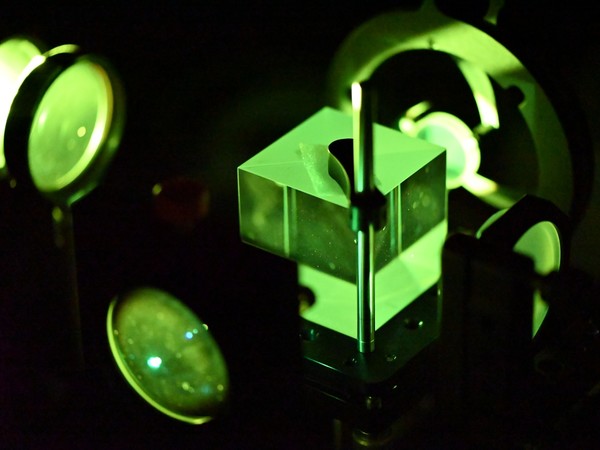With the help of artificial intelligence, scientists from the Joint Laboratory of Optics of Palacký University and the Institute of Physics of the Czech Academy of Sciences have succeeded in significantly improving the accuracy and efficiency of quantum entanglement tests, which play an important role e.g. in the design of quantum computers. The results of their research were recently published in the prestigious journal Physical Review Research.
Entanglement is a remarkable phenomenon in quantum mechanics. Scientists speak of quantum entanglement when the quantum state of two or more particles is connected regardless of their mutual distance. If experts find out certain information about one particle, then they will also get information about the other at the same time. This property has fascinated scientists since the 1920s, when it became the subject of a scientific dispute between Albert Einstein and Niels Bohr.
Today, quantum entanglement has become the building block of many quantum-information protocols and algorithms. It has given rise to quantum teleportation, quantum cryptography, and Shor’s algorithm. “Tests focused on quantum entanglement are therefore important. Because of this, precise detection methods are in high demand,” said Vojtěch Trávníček from the Joint Laboratory of Optics.
Scientists write the information into quantum particles such as an electron or photon. The particles then enter a certain quantum state. A set of these particles may be in a quantum state that can be described as entangled, or conversely, they may be in a separable state – that is, not entangled. Being able to distinguish between these two basic possibilities is therefore crucial in quantum informatics.
“Conventional quantum entanglement tests are designed to never label a separable state as entangled. Thus they are, at least in theory, perfectly selective. This is good, but it comes at the cost of reduced sensitivity of the tests, i.e. their ability to detect the largest possible number of entangled states,” Trávníček pointed out.
The researchers therefore asked themselves whether they could increase the sensitivity of the tests by reducing the demands on the best possible selectivity. This would then allow them to detect many more quantum-entangled particles. “For this purpose, we used neural networks and machine learning and trained a model test that can detect entanglement. We can thus change the ratio between sensitivity and selectivity and also change the number of measurements used to detect entanglement,” added the physicist.
The scientists from the department then managed to significantly increase the sensitivity of the test by slightly reducing its selectivity. As a result, they were able to detect many more entangled quantum particle states than using conventional tests. “Furthermore, this ratio can be easily changed to find the optimal setting for a given application. We continue to explore the topic of using artificial intelligence to detect entanglement, and we already have very promising results,” Trávníček said.
